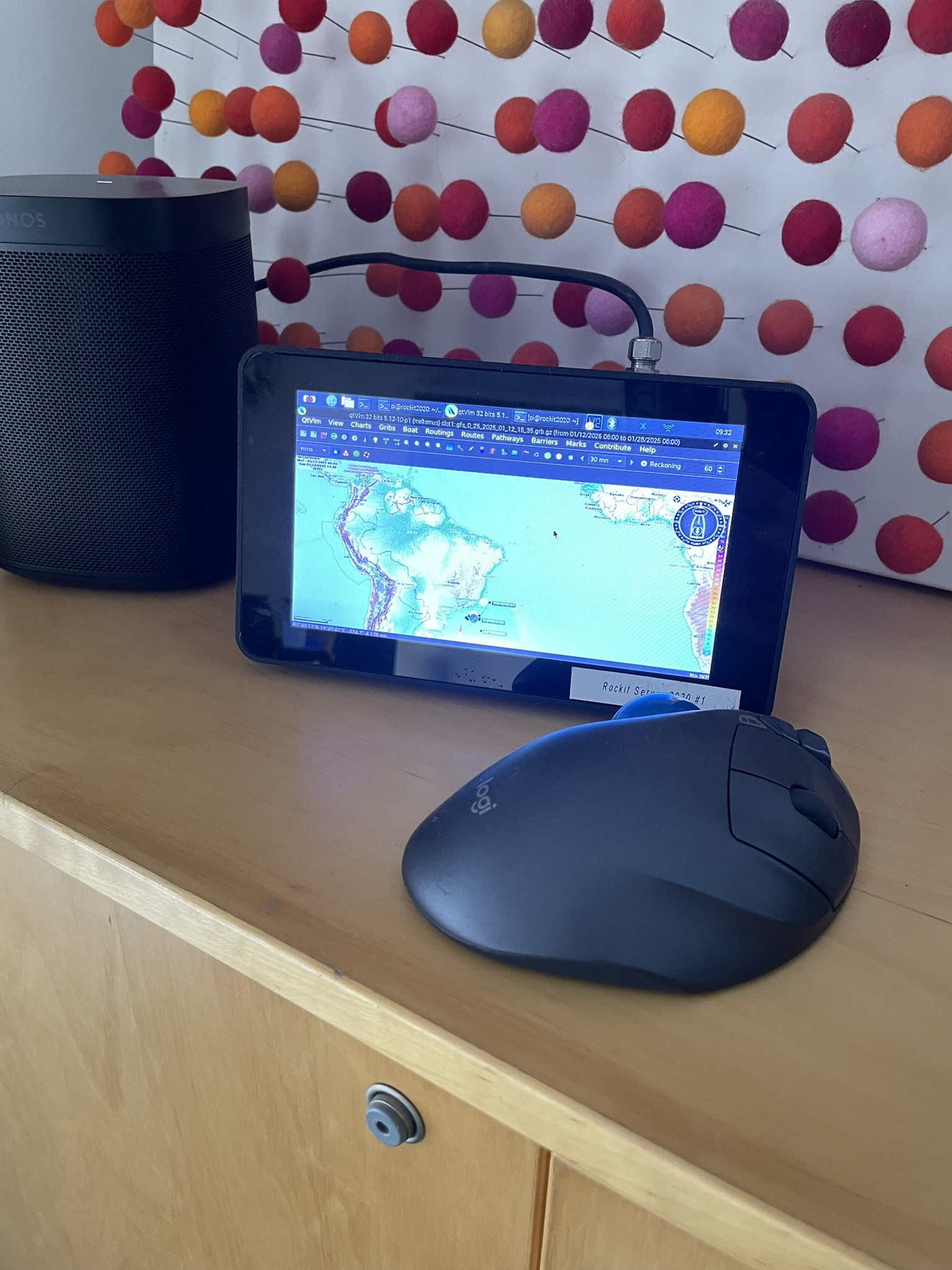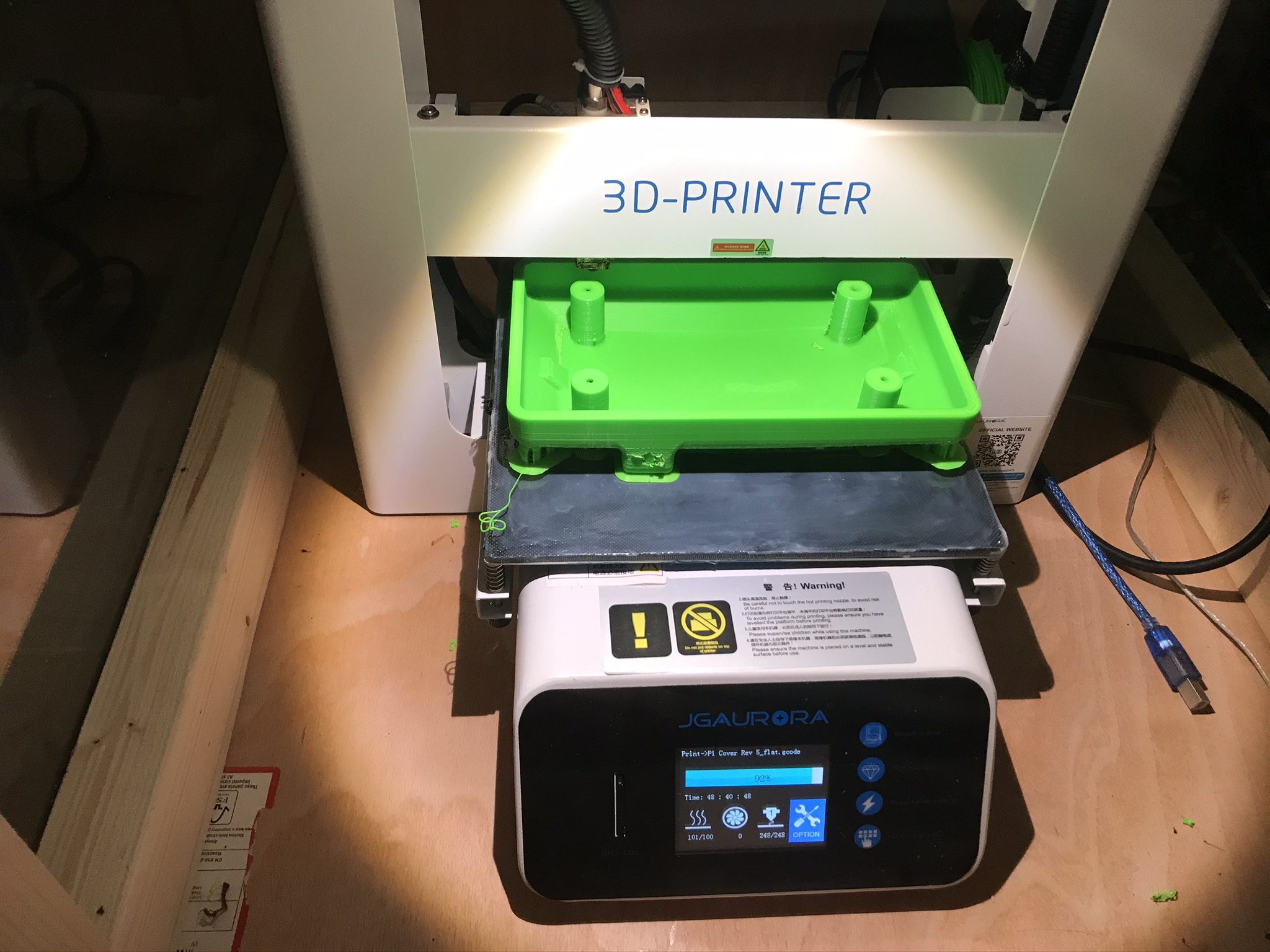2020 seems a long time ago now.
Being locked down in a converted cow barn at the end of a farm track in Wiltshire took social isolation to the extreme but it gave us time to pause and reflect.
For us, that reflection centred on one question:
How could we make Rockit better, and more importantly, easier to use?
The answer seemed obvious once it appeared. Instead of asking people to install software, configure settings, and run it on their own laptops — why not package everything into one neat little box?
A device with a screen, preloaded with Rockit, ready to go. Just plug it into the boat’s network, press a button, and start collecting data.
From Idea to Reality
As with most ideas, it turned out to be a little harder than we thought to find a working implementation. Several iterations, countless discarded 3D prints, and plenty of trial and error later, we finally arrived at what’s now known as the Rockit Server Device Model 1. Not the most glamorous name, perhaps, but it stuck — and it’s all over the website now, so it’s here to stay.
What Does It Actually Do?

At its heart, the Rockit Server is a rugged, purpose-built computing device designed to run the Rockit data collection service or any other software package available for the Raspberry Pi Platform.
In the context of Rockit, it acts as a control head, letting you start and stop data collection, configure what’s being recorded, and view the basics in real time. The device runs a streamlined version of Rockit designed to work on a smaller touchscreen.
We have added in a browser App so you can connect to the Rockit Server and view the key performance data on your phone as you sail.
But that’s not all. You can also connect to it from the full desktop version of Rockit. That means you can run advanced analytics on a laptop while the Rockit Server quietly does the hard work in the background crunching the numbers. All of this is connected together over WiFi.
Over the past four years we’ve been putting it through its paces on Jengu, our test boat, evolving the device each season until we reached the current version.
The ability to start recording with a single tap on a big green button has been a revelation.
Doesn’t Sound Too Complicated?
Designing it was another story. Our checklist of requirements grew quickly:
- Compact, but with a touchscreen large enough for less-than-perfect eyesight and fat fingers.
- Usable even when the boat’s bouncing around at sea.
- You could connect a keyboard and mouse via Bluetooth
- Affordable to build in small batches — even on demand – we could extra parts to the device if they fitted and customers wanted it.
- Powerful enough to handle the thousands of calculations Rockit performs while collecting data.
- Efficient enough to run on a 12v boat supply without draining the battery.
- A low minimum amp load — less than 3A at 12v — to ensure it could run continuously without being a burden on the boat’s electrical system.
- WiFi built-in, to connect seamlessly with devices such as the Actisense W2K-1.
- Potentially powered directly from the NMEA 2000 bus, while also collecting data from it.
- Resistant to corrosion and built for the marine environment.
- Able to pass emissions and compliance testing.
Building the First Prototype
 After plenty of research, we settled on the Raspberry Pi 4B as our platform of choice. Affordable, compact, and with just enough horsepower for the job. Importantly, it also kept us under our target power budget — less than 3A at 12v.
After plenty of research, we settled on the Raspberry Pi 4B as our platform of choice. Affordable, compact, and with just enough horsepower for the job. Importantly, it also kept us under our target power budget — less than 3A at 12v.
With the Model 3 iteration we have deliberately avoided the Raspberry Pi 5, which while faster, comes with a higher current draw that we didn’t think was practical for use afloat.
We paired the Pi 4B with the Raspberry Pi touchscreen and invested in a 3D printer to start prototyping cases.
Once we thought we had a solution that might actually work, we called in Tim Bird from Whitehorse CAD to refine the design. Tim reworked the case, producing a neat enclosure that wrapped around the screen and reduced the profile of the device to a minimum. Currently we are sticking to the Henry Ford .. any colour as long as its black but as these are bespoke case neon green is still theoretically an option.
One of the biggest challenges was heat management. In a sealed case, the Raspberry Pi quickly built up heat under sustained load. We tackled this on two fronts: first by tweaking the software to reduce GPU load and keep temperatures down, and second by adding extra heatsinks to draw heat away from the CPU. Together these changes made the unit stable and reliable, even when working hard in warm cabins or under direct sunlight.
Looking Ahead
By 2025, the Rockit Server had matured into a truly connected device. The latest evolution adds cloud upload functionality, allowing data collected on the boat to be securely uploaded and stored online. Skippers and crews can now access their performance data not only on board, but also ashore — for debriefs, analysis, and long-term performance tracking.
At the same time, we introduced the Rockit Server Model 3, which for the first time could connect directly to the NMEA 2000 bus. This eliminated the need for third-party gateways, simplifying installation and making data collection even more seamless. Together with cloud connectivity, this step has pushed Rockit further towards being a plug-and-play solution for modern yachts.
It’s another milestone in making Rockit both simpler and more powerful — and a reminder of just how far the idea born in 2018 has come.